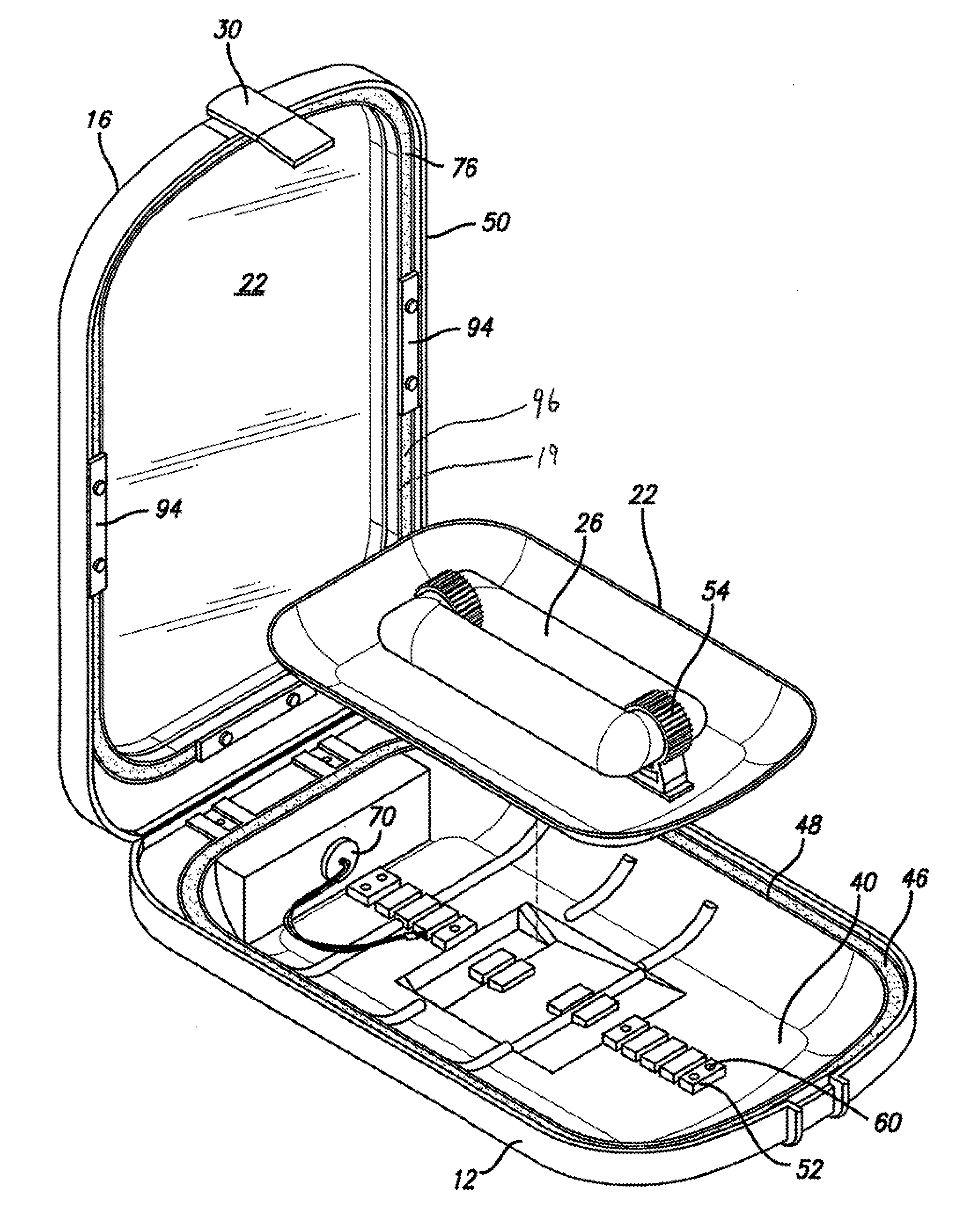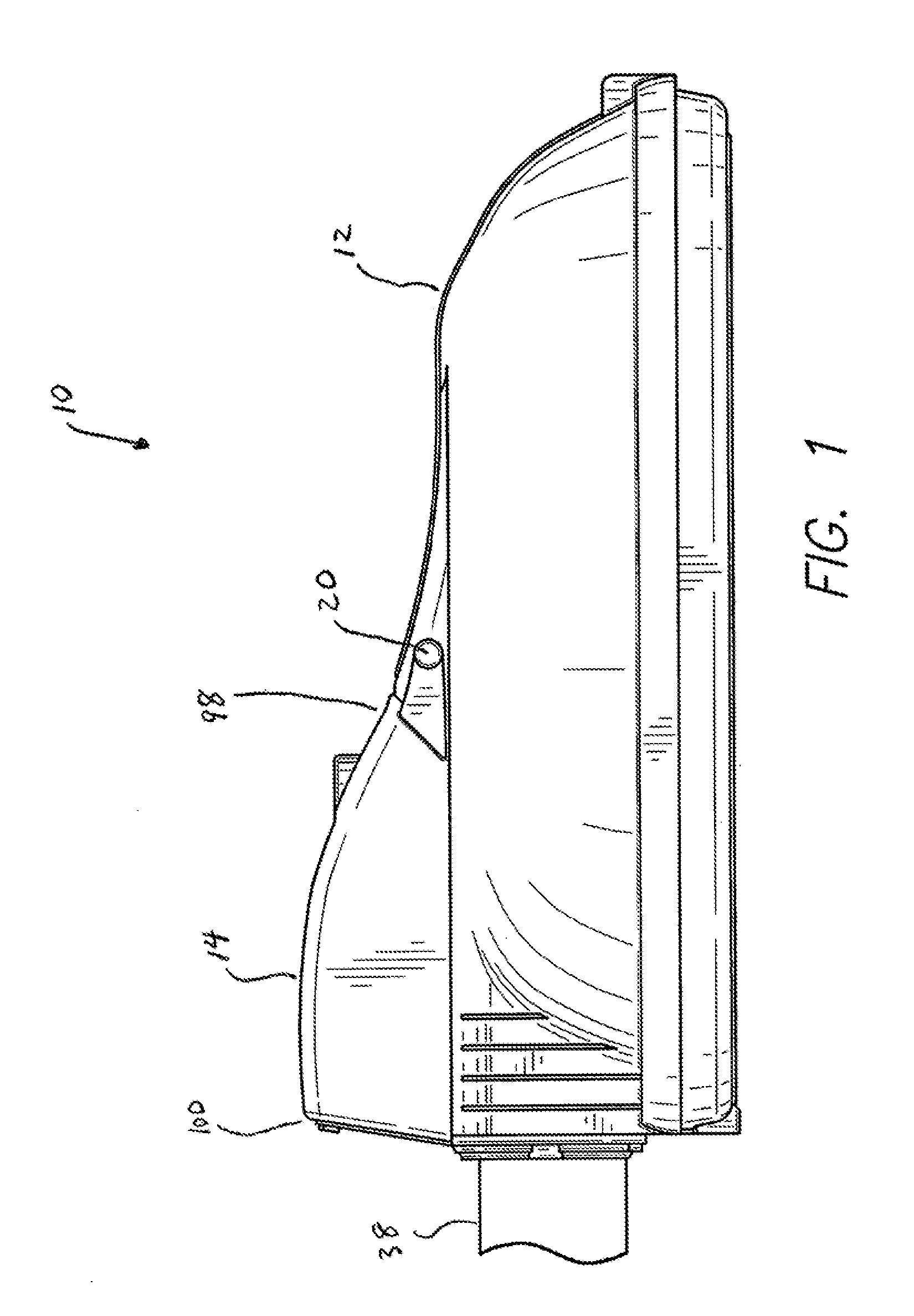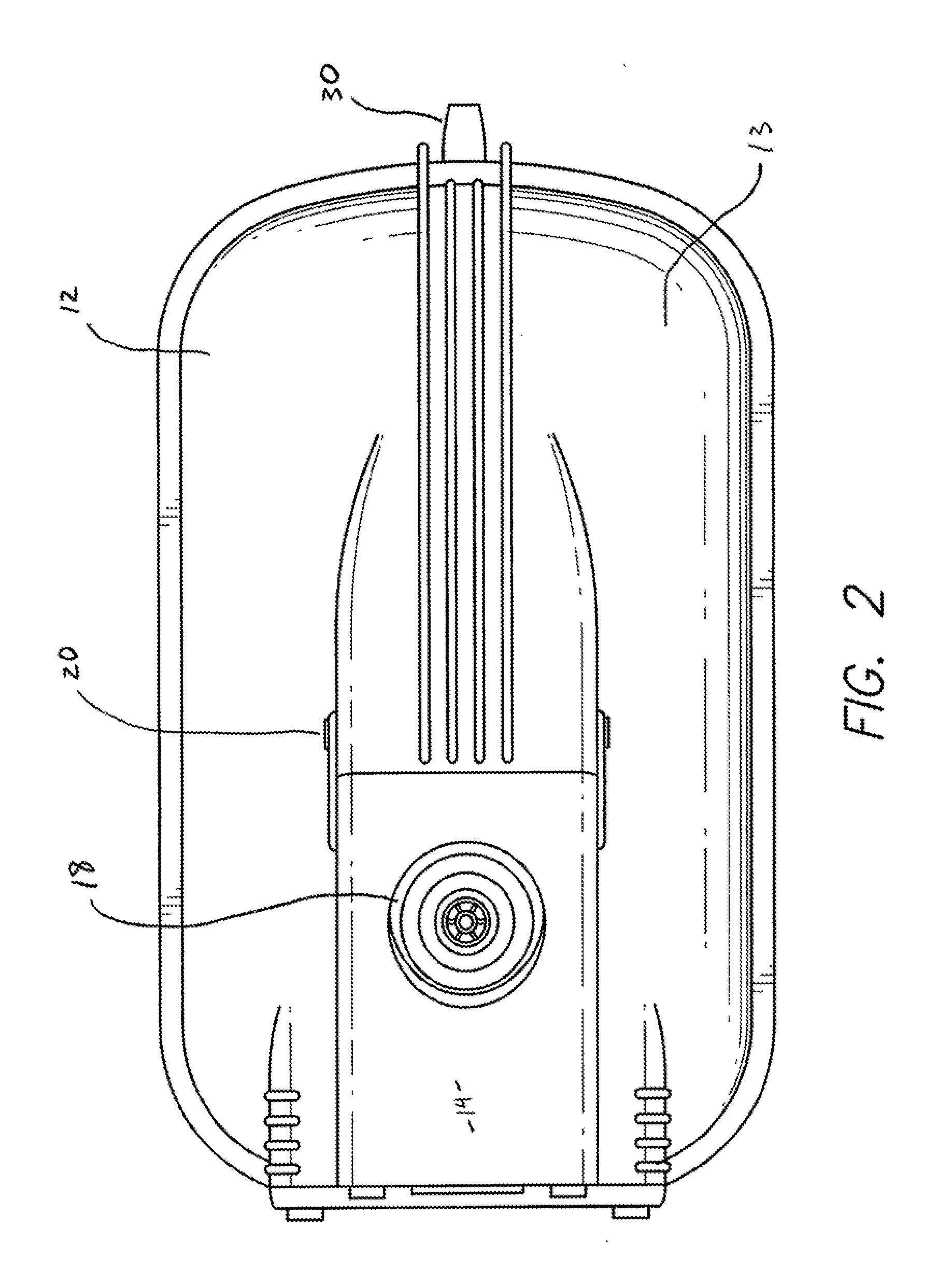Induction streetlight
a technology of induction streetlights and housings, which is applied in the direction of fixed installation, lighting and heating equipment, lighting support devices, etc., can solve the problems of reducing the overall service life of the system, compromising system life and performance, and increasing the initial cost of heat sensitive components, so as to improve the service life and reduce the time required. , the effect of improving the cooling
- Summary
- Abstract
- Description
- Claims
- Application Information
AI Technical Summary
Benefits of technology
Problems solved by technology
Method used
Image
Examples
Embodiment Construction
[0019]The present invention will now be described more fully with reference to the accompanying drawings, in which preferred embodiments of the invention are shown. The invention may, however, may be embodied in many different forms and should not be construed as being limited to the embodiments set forth herein. Rather these embodiments are provided so that this disclosure will be thorough and complete, and will fully convey the scope of the invention to those skilled in the art. Like numbers refer to like elements throughout.
[0020]With reference to FIGS. 1 through 11, the present invention streetlight 10 includes a main housing 12 having an outer surface 13. The main housing 12 includes a lamp compartment 40 (see FIGS. 8-9), a ballast compartment 42 (see FIG. 6), and mast compartment 44 (see FIG. 7). Located within the lamp compartment 40 of the main housing 12 are a lamp 26 and a reflector 24 (see FIG. 8). Located within the ballast compartment is a ballast (lamp electronics) 32....
PUM
 Login to View More
Login to View More Abstract
Description
Claims
Application Information
 Login to View More
Login to View More - R&D
- Intellectual Property
- Life Sciences
- Materials
- Tech Scout
- Unparalleled Data Quality
- Higher Quality Content
- 60% Fewer Hallucinations
Browse by: Latest US Patents, China's latest patents, Technical Efficacy Thesaurus, Application Domain, Technology Topic, Popular Technical Reports.
© 2025 PatSnap. All rights reserved.Legal|Privacy policy|Modern Slavery Act Transparency Statement|Sitemap|About US| Contact US: help@patsnap.com



